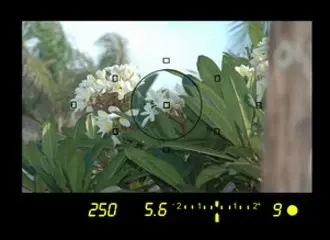As pointed out above...the key is to look at the 'scale' and see where the 'needle' falls.
I believe that with many Nikon cameras, the meter is not visible unless you are in manual mode (or in an auto mode with exposure compensation set to something other than zero).
So if you don't see the scale in the viewfinder, it's because the camera is automatically adjusting the settings to make the needle get to zero.
So when you switch into manual mode, you can adjust three things to affect the needle. Shutter speed, aperture and ISO.
So the first thing to know, is how to change those three settings (in manual mode). Once you have that figured out, practice it...a lot. Point the camera at your subject or scene, and then adjust the setting to get the needle to zero. Keep in mind that if it's more than two 'stops' away from zero....it will just get to the end of the scale and flash. So you have to keep adjusting the settings until the needle does start moving...then you can see how close you are to zero.
Taking a step back, you should know which direction of shutter speed, aperture and ISO will give you more light (exposure) or less light (exposure). So that way, you will know which direction to adjust your settings.
Once you have practiced that, you will likely be asking yourself..."Which settings should I adjust?". The answer to that is 'The ones that give you the photo that you want'. To put it another way...Each of the three settings has it's own artistic characteristic (or consequence). Shutter speed controls how motion is captured, aperture affects depth of field and ISO affects digital noise levels. So the first thing you need to do, is to set an artistic goal. Once you have set that goal, you can adjust the setting that will help you achieve that goal...then you use the other two settings to get the meter to zero. Again...practice, practice, practice.
So once you can do that, you should be comfortably shooting in manual mode. But as pointed out above by munecito, getting to zero on the meter doesn't necessarily mean getting 'proper' exposure. Cameras have what is called 'reflected light meters'....and for them to work, they have to be calibrated to be correct for what we call 'middle gray'. So if you are getting your meter to zero on something that is middle grey (or similar tone), then your exposure would be accurate. But if your subject (the area that you are metering) is not the same tone as middle grey, then you would not have proper exposure when at zero. So to get proper exposure, you would have to adjust the meter to be off of zero. The way it works, is that for subjects that are darker than middle grey, you need to adjust to a negative position on the scale. For subjects that are brighter than middle grey, you need to adjust to a position that is on the positive side of the scale. Just how far away from zero, is something that you'll have to figure out. The brighter (or darker) the subject is, the further away from zero you would need to be. Either way, you'll mostly likely be somewhere on the scale (plus or minus two).
One method for getting proper exposure is to use a grey card.
How to use a Grey Card ~ Mike Hodson Photography


![[No title]](/data/xfmg/thumbnail/35/35264-5ade32b7036391926536661aeb7491c3.jpg?1734166921)
![[No title]](/data/xfmg/thumbnail/35/35265-c9ea3efd2c618a57ea136e63ad106880.jpg?1734166927)
![[No title]](/data/xfmg/thumbnail/31/31097-95606cf1bf0ecc862078bc333f20d4f7.jpg?1734159259)








![[No title]](/data/xfmg/thumbnail/32/32148-95f8731a01012cd472d3896791e3b7de.jpg?1734161045)